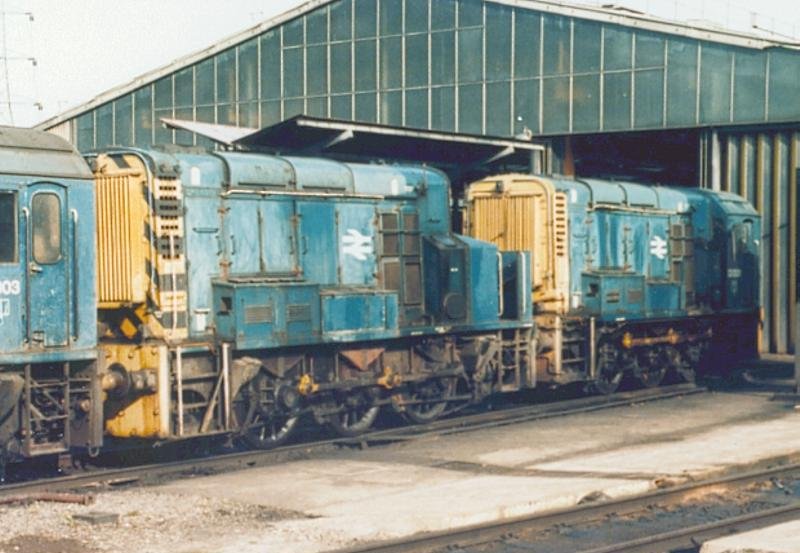- British Rail Class 13
Infobox Locomotive
name = British Rail Class 13
powertype = Diesel-electric
caption = 13001 atTinsley TMD on14 April 1984
roadnumber = D4500–D4502, later 13001–13003
builder =British Railways ’Darlington Works (builder and rebuilder)
builddate = 1965 (rebuilt)
totalproduction = 3
gauge = RailGauge|ussg|lk=on|al=on
primemover = English Electric 6KT, 2 off
transmission = DC generators, DC traction motors, double reduction gearing
tractionmotors = EE, four off
whytetype = 0-6-0+0-6-0
uicclass = C+C
wheeldiameter = convert|4|ft|6|in|m|3|abbr=on
minimumcurve =
trainbrakes = Vacuum
locobrakeforce = convert|37|LTf|sigfig=2|lk=on
wheelbase = convert|42|ft|1+1/2|in|m|2|abbr=on
length = convert|60|ft|1|in|m|2|abbr=on
width = convert|8|ft|6|in|m|2|abbr=on
height = convert|12|ft|8+1/2|in|m|2|abbr=on
weight = convert|120|LT|sigfig=3|lk=on
topspeed = convert|20|mph|km/h|abbr=on|lk=on
poweroutput = "Engine:" convert|350|hp|0|abbr=on × 2
tractiveeffort = "Maximum:" convert|70000|lbf|kN|1|abbr=on|lk=on
fuelc
convert|1336|impgal|abbr=on|lk=on
trainheating = None
multipleworking = Not fitted (except control of slave by master)
axleloadclass = RA 8
railroad =British Railways
retiredate = 1983–1986TheBritish Rail Class 13 was formed because in 1965 it was found necessary to provide more powerful shunters for theTinsley Marshalling Yard . This was provided by permanently coupling together two Class 08 shunters as a ‘master and slave’ (alternatively ‘cow and calf’) units, the latter with its cab removed. Both units were ballasted to improve traction. Initially the units were coupled cab-to-cab but it was found more practical to couple Master nose to Slave cab. The thinking behind adopting this dual locomotive design is that a larger, rigid locomotive could not be used due to the risk of grounding on the hump.List
Three pairs were formed as follows:
*Master unit D4190 and Slave unit D4189 to form D4501, later 13001
*Master unit D4187 and Slave unit D3697 to form D4502, later 13002
*Master unit D4188 and Slave unit D3698 to form D4500, later 13003Withdrawal
With the end of hump shunting at Tinsley the class became obsolete. The unique qualities of the aging locomotives were not required elsewhere. Withdrawal was therefore inevitable; 13002 went in 1983, with the remaining two locomotives going with the closure of Tinsley hump in 1985.
Disposal
None of this unusual class survive.
* 13001 was scrapped at BREL Swindon Works in May 1985
* 13002 was scrapped at BREL Swindon Works in October 1983
* 13003 was scrapped at BREL Doncaster Works in September 1986References
*cite book |author=Strickland, David C. |year=1983 |title=Locomotive Directory—every single one there has ever been |location=Camberley, Surrey |publisher = Diesel and Electric Group |pages=53–55 |isbn=0 906375 10 X
Wikimedia Foundation. 2010.
